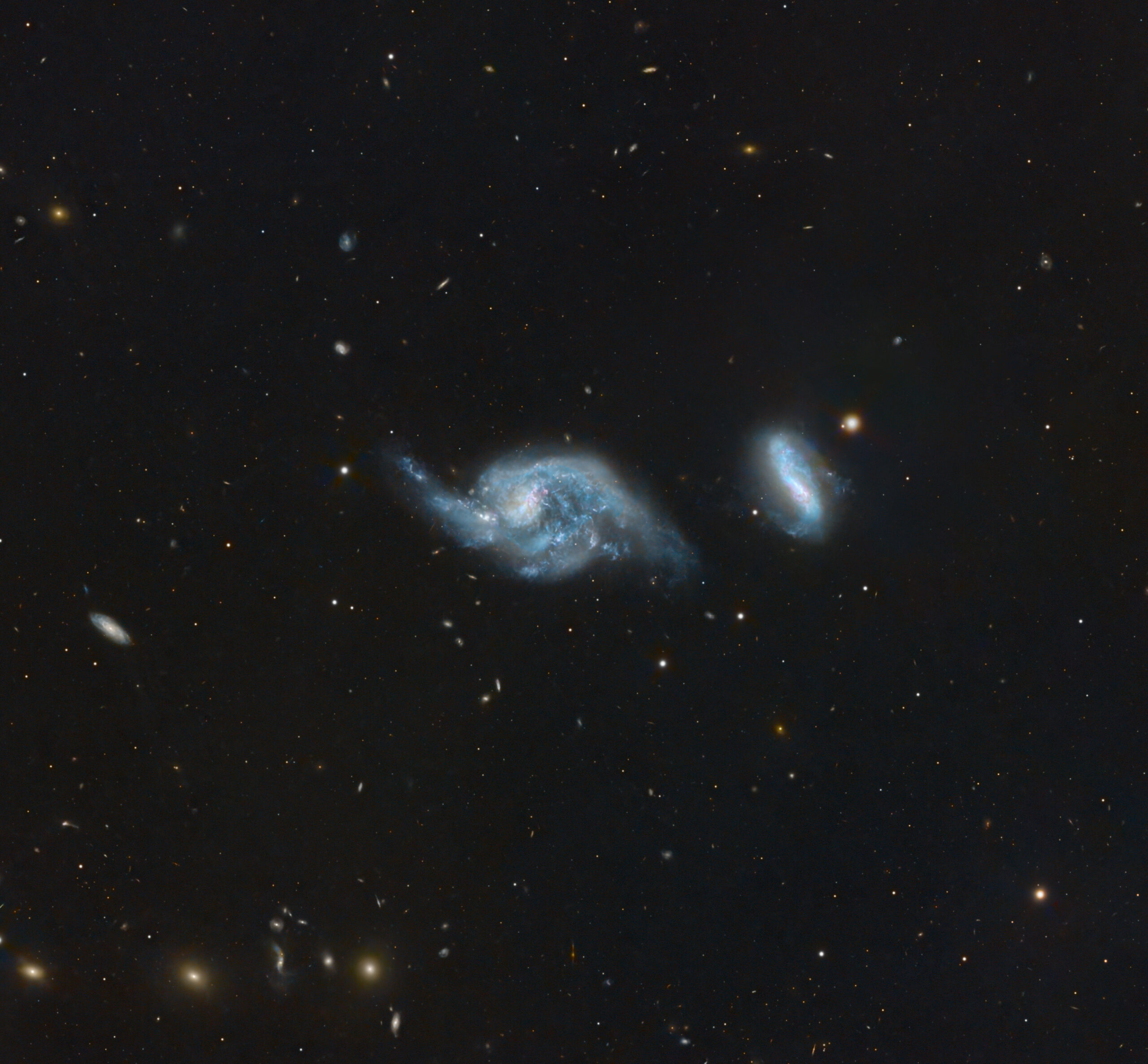
NGC 3023 and NGC 3018, are a pair of spiral galaxies in the constellation Sextans, located about 87 million and 77 million light-years from Earth, respectively.
Their proximity in space and projected closeness in the sky suggest they may be gravitationally interacting — and that interaction may explain some of the visual complexity in this field.
NGC 3023, the larger of the two, spans approximately 76,000 light-years and shows the loosely wound spiral structure of an intermediate barred spiral galaxy (SABc). But instead of clean, symmetric arms, the galaxy looks disturbed and irregular — with bright clumps, asymmetries, and a rather chaotic morphology. This messy appearance may be the result of a recent or ongoing tidal interaction with NGC 3018, which can warp spiral arms, ignite bursts of star formation, and scatter stars and gas unevenly across the disk.
Adding to the activity, NGC 3023 hosts a bright ultraviolet region known as Markarian 1236 — likely a large, young star-forming complex, potentially containing short-lived, massive Wolf-Rayet stars. Bursts like this contribute further to the galaxy’s turbulent structure.
To the right of NGC 3023 lies NGC 3018, a smaller barred spiral about 27,000 light-years across. It also shows signs of mild distortion, supporting the idea that the two galaxies are dynamically linked. Subtle features like faint tidal extensions and asymmetries in both galaxies hint at ongoing gravitational interaction.
The background of the image is also filled with numerous faint galaxies, some showing clear spiral or elliptical structures. These distant systems give the field a sense of depth and scale,
Imaged in LRGB on my Planewave CDK 1000 at Observatorio El Sauce, Chile.
Image acquisition and processing: Mike Selby